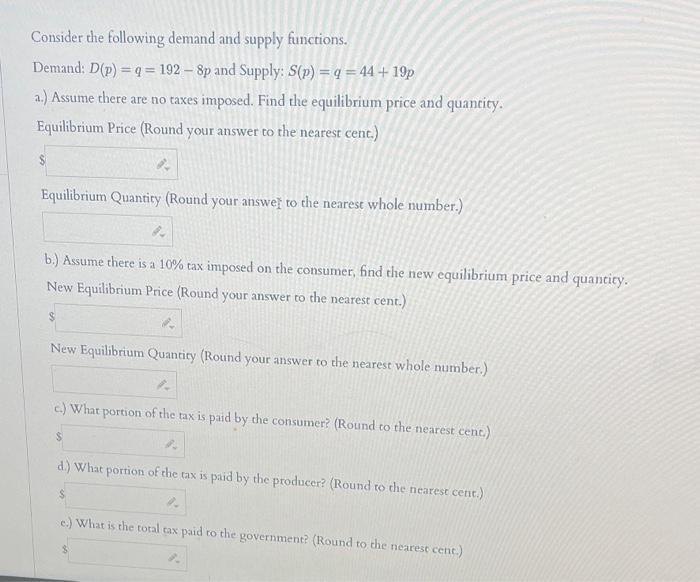Answered step by step
Verified Expert Solution
Question
1 Approved Answer
Consider the following demand and supply functions. Demand: D(p) = q = 192 - 8p and Supply: S(p) = q = 44+ 19p a.)

Consider the following demand and supply functions. Demand: D(p) = q = 192 - 8p and Supply: S(p) = q = 44+ 19p a.) Assume there are no taxes imposed. Find the equilibrium price and quantity. Equilibrium Price (Round your answer to the nearest cent.) Equilibrium Quantity (Round your answer to the nearest whole number.) 42 b.) Assume there is a 10% tax imposed on the consumer, find the new equilibrium price and quantity. New Equilibrium Price (Round your answer to the nearest cent.) $ New Equilibrium Quantity (Round your answer to the nearest whole number.) 1. c.) What portion of the tax is paid by the consumer? (Round to the nearest cent.) $ d.) What portion of the tax is paid by the producer? (Round to the nearest cent.) e.) What is the total tax paid to the government? (Round to the nearest cent.)
Step by Step Solution
★★★★★
3.52 Rating (155 Votes )
There are 3 Steps involved in it
Step: 1
The image shows a set of questions relating to economics specifically dealing with the determination of equilibrium price and quantity along with anal...
Get Instant Access to Expert-Tailored Solutions
See step-by-step solutions with expert insights and AI powered tools for academic success
Step: 2

Step: 3

Ace Your Homework with AI
Get the answers you need in no time with our AI-driven, step-by-step assistance
Get Started


